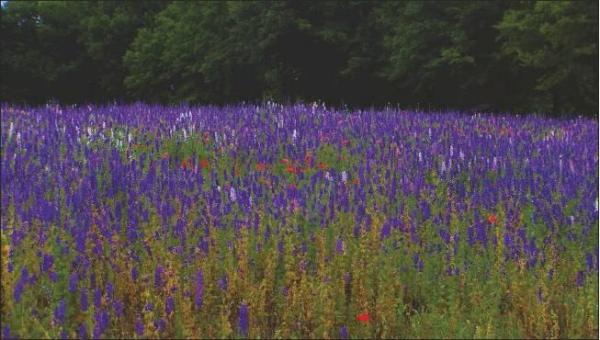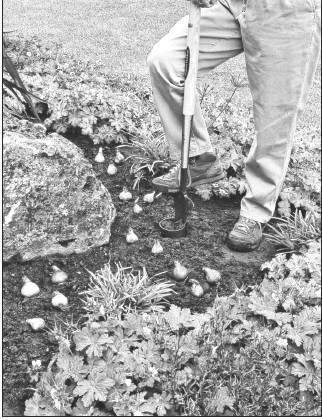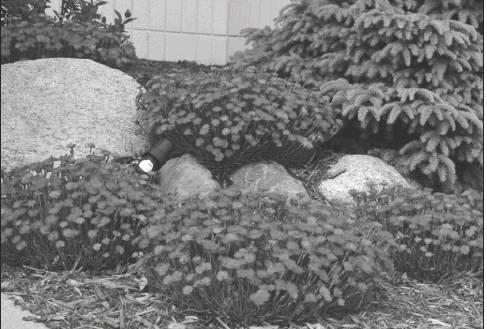Getting into Gardening
The end of September is fast approaching. Fall arrived on the 23rd and many of us might find ourselves thinking thoughts of October, pumpkin spice lattes, and candy corn. Sure, October is a beautiful month of autumnal colors and rare first frosts. Crisp, blue-sky days that are the perfect time to kick back and enjoy all that life can offer, crisp Friday night high school football games and watching the leaves change. And yes, October is often the time for jackets, pumpkins and changing leaves. But hold on a second, October can really fool you if you are not careful. Last Halloween it was warm enough that when I took my youngster trickor-treating, I was in shorts and a t-shirt.
What I am saying is that even though the calendar may say that fall has arrived, if the weather is still at triple digits and the days are still hot and dry, it is not yet fall in the garden or flower bed. The annual autumn work that needs doing in the garden and yard can wait another week or two – so no need to rush things.
Another thing about this time of year is that many folks don’t think of it as a planting season, especially for garden flowers. However, October is the ideal month to plant a wide array of flowers that will add bright colors and fragrant blooms to your garden in the spring.
I am talking about Bulbs. Bulbs are awesome, plant them now and they will come up year after year. Bulbs are perennial plants that have fleshy, underground structures that store nutrients during the plant’s dormant period. Bulbs can be narrowed into two categories; spring bulbs, which bloom in the spring, and fall bulbs, which bloom in fall. The fall season is when we need to plant spring-blooming bulbs and the spring is when we plant fall-blooming bulbs – not too hard to remember, right?
Spring bulbs require time for their roots to develop before a frost hits, so I like to have them in the ground sometime after the ghosts and goblins of Halloween make their appearance but before the annual Thanksgiving feast. Fall is when we plant the stunning spring daffodils, tulips, and Dutch iris so many of us treasure in the spring. Mid-November is a good target but just be sure to get them planted before the end of December and you will be fine.
If bulbs are planted too late, they may be shorter than usual. Some like hyacinth and tulips should be refrigerated for 6 to 8 weeks before planting, so you’ll want to get those as soon as nurseries have them in stock. Oh, and keep apples away from the bulbs in the refrigerator – they just do not get along!
When you are buying bulbs be sure to get the large bulbs that are firm, with no sign of mildew or mold. Larger bulbs will produce larger and more abundant blooms. When ordering online or from a catalog you don’t get to choose the particular bulbs you want but you do get a better variety of choices, so I recommend this option.
Also remember that most bulbs require full sun, but early blooming bulbs may be planted under deciduous trees like pecans, which are slow to leaf out. Be sure to plant them in well-drained soil. If the soil stays moist when they are dormant your bulbs could rot. Naturalizing bulbs, that return year after year, can rot if sprinkler systems deliver too much water in soil that doesn’t dry out.
Always plant bulbs pointed side up! And as a Texas gardener I recommend we all adjust the depth of planting bulbs to twice the width as opposed to the general recommendation of three times the width of the bulb. Over the years I have also learned that for the best, most eye-pleasing displays, we need to plant our bulbs in scattered groups of five or more and not in straight lines.
Firm the soil around the bulb and water well to settle the soil. Fertilize once or twice during the spring. Mark the location with the date and variety name so that you don’t plant something else there and damage the bulbs. This also helps you remember which ones you put where!
It is important to allow the foliage to die back naturally and not cut it back until it is yellowing. The yellowing leaves are feeding the bulbs for next year’s blooms. Interplant bulbs with other perennials like daylilies to hide the unsightly foliage.
Tulips (other than naturalizing Cluisianas) will only bloom one year, so can be discarded after the blooms fade. After several years, naturalizing bulbs will become crowded and will bloom less. Dig up the bulbs after the foliage has faded and divide the clumps. Prepare the soil and replant bulbs and share the extras with friends or plant in other areas.
If you need to add some beauty now you should start thinking about some frost-tolerant additions to your beds. Plants that are tolerant to frost can survive the harsh conditions with little to no damage. Ice plant, hellebore and goldenrod are a few such frost-tolerant plants. Ice plant (Delosperma cooperi) grows in USDA zones 8 through 10 in full sun. It reaches heights of about 6 inches or less and produces pink or purple blooms. Hellebore (Helleborus × hybridus cvs.) can bloom in temperatures below freezing and grows in USDA zones 4 through 9. The cup-shaped flowers tilt downward and appear throughout the plant’s glossy green leaves. Goldenrod (Solidago rigida) has clusters of yellow blooms that appear at the top of tall flower stalks. It grows in full sun to part shade in USDA zones 3 through 9. We are in zone 8 so these will work for us.
A Few others to think about are:
Chrysanthemums: these fall flowers can be planted in beds and actually will outperform most container planted ones. Proper preparation begins one year before peak performance. Plant in full sun in the fall of the first year. During the next year, keep the plants trimmed back to a rounded shape and do not allow them to produce flowers. In August quit cutting off any flower buds that form. That fall you will have beautiful mums just covered in flowers. Repeat this procedure for the following year.
Dianthus: if you plant these flowers in the fall, by spring they will be covered with blooms. This is a cool season flower. It is considered an annual in some places but many times it will overwinter for several years here and provide you with lovely flowers both in the spring and in the fall. Plant in full sun.
Fall Asters: lovely natural looking mounding perennial that blooms in the fall with masses of daisy like lavender flowers. Wonderful for the wildflower bed or in combination with mums.
Larkspur: Larkspurs should be planted in the fall for spring blooms. They are tough, cool season flowers with spikes from pink to purple and blue. The ‘Bunny Bloom’ larkspur is a favorite as the center of each flower seems to have the shape of a white rabbit’s head in the center.
If you have never tried bulbs before trying them this fall will bring you real pleasure come spring.






